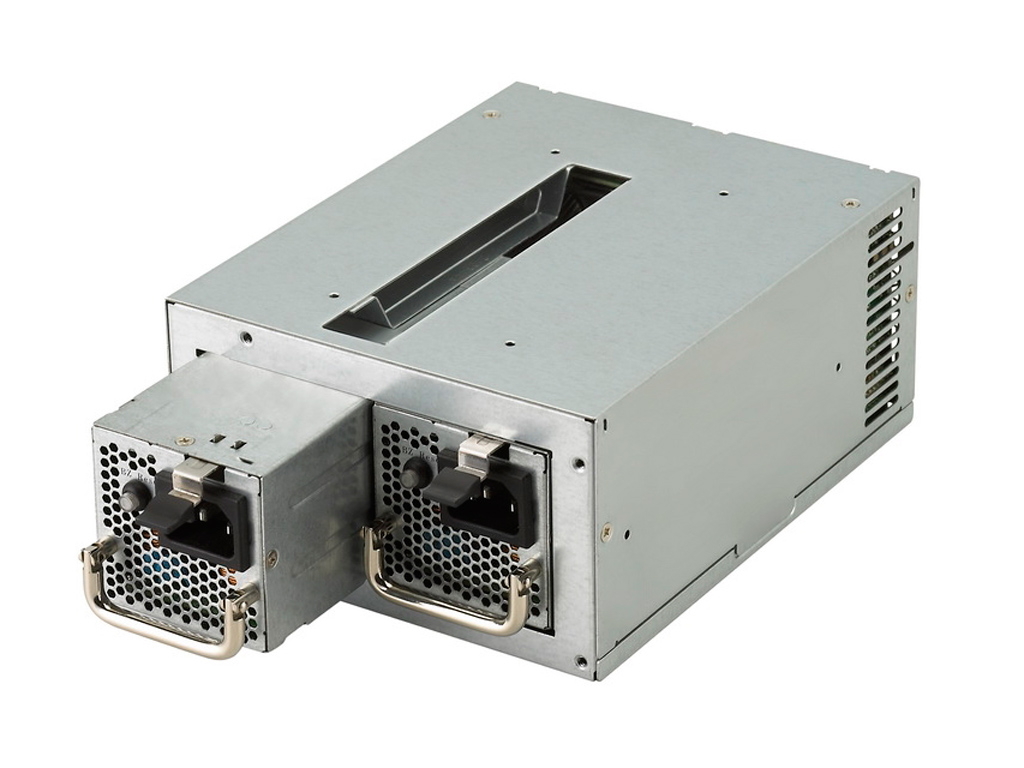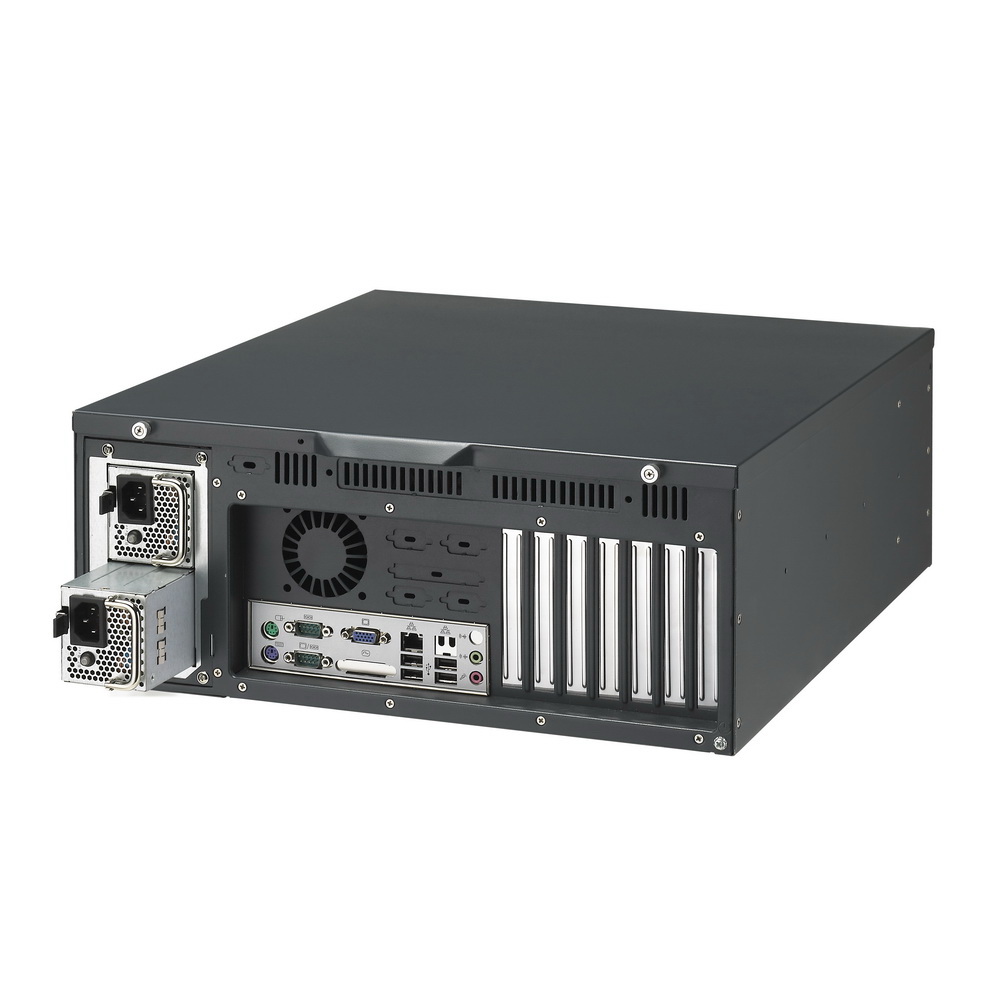FSP Introduces 700W PS2 Redundant PSU With 80 Plus Gold Efficiency (Updated)
FSP is one of the six largest PSU OEMs and has a huge portfolio of power-related products. The new release from this company is an 700W redundant PSU, compatible with the ATX PS/2 form factor, featuring 80 PLUS Gold efficiency.
Update, 6/28/2016, 1:55 a.m. PDT: FSP informed us that this PSU doesn't belong to the Twin Series but to its server-grade line. In addition, we have been asked to remove the screenshot depicting the application that supports the Twin Series.
During Computex 2016 we had the chance to take a good look at FSP's redundant PSU line, called Twin Series, which offers server-grade PSU's to enthusiast home users. Today the FSP700-70RGHBE1 was announced. This PSU belongs to FSP's server-grade line and not to the Twin Series, as we were informed, featuring a pair of hot-swap PSUs at their internals. To be more specific the FSP700-70RGHBE1 uses a couple of 700W power supplies, which, thanks to their minimal footprint, achieve a high power density score of 22.4W/in3. According to FSP this is the highest power density score currently available in a standard PS/2 (redundant) form factor compatible unit. In case one of the aforementioned PSU fails, the second immediately takes over in order to allow the system to sustain seamless operation. With the FSP700-70RGHBE1, FSP's corresponding line consists now of four models in total with capacities ranging from 500W to 700W.
The FSP700-70RGHBE1 is 80 PLUS Gold certified, and as expected, its hot-swap PSUs use a contemporary design featuring an APFC converter along with DC-DC convertors. Because this PSU follows the ATX PS/2 form factor, it will be compatible with the majority of ATX chassis without the use of extra brackets or other modifications. In addition, FSP provides four sets of brackets along with the unit, which allow its installation in most server chassis.
Some of you may wonder how a redundant PSU operates. For starters, in order for a PSU to be redundant, it has to include at least a couple of hot-swap PSUs. In the case of the FSP700-70RGHBE1, each of the two embedded PSUs features its own power pin-out. Under normal conditions, FSP stated, both PSUs operate sharing the load for increased efficiency and stability, but if one of them fails, then the other one automatically fully takes over. By "hot-swap," we mean the ability to change the failed PSU on the fly, without having to shut down the system. The fact that both PSUs share the load under normal conditions isn't as easy as it sounds, because it requires each PSU to know exactly the load levels that its counterpart handles, and this needs a sophisticated load sharing mechanism.
All server-grade FSP units are supported by an LED alarm guard system that alerts their operators to any problems that might arise, simplifying problem diagnosis. If a power supply fails, an alarm will go off, and an LED indicator will show which power supply needs to be replaced. In addition, the PSUs communicate with the system through a PMBus interface. We should note here that there is an application for the Twin Series PSUs, which exploit the PMBus interface allowing users to monitor the status of the PSU. We don't know though if FSP plans to release a similar application for its server-grade models.
| Model Number | FSP700-70RGHBE1 |
|---|---|
| Max. DC Output | 700W |
| PFC | Active PFC |
| Efficiency | 80 Plus Gold |
| Modular | No |
| Intel Haswell Ready | Yes |
| Operating temperature | 0 °C ~ 50 °C |
| Protections | Over Voltage Protection Over Current Protection Short Circuit Protection Over Power Protection |
| Hold-up time | 115V/60Hz 17ms. Minimum@100% Load 230V/50Hz 17ms. Minimum@100% Load |
| MBTF | 100,000h @ 25 °C |
| Dimensions | 150 mm (W) x 86 mm (H) x 190 mm (D) |
| Input Range | 90 - 264 VAC |
| Altitude | 5000m |
| Warranty | 3 years |
Follow us on Facebook, Google+, RSS, Twitter and YouTube.
Get Tom's Hardware's best news and in-depth reviews, straight to your inbox.

Aris Mpitziopoulos is a contributing editor at Tom's Hardware, covering PSUs.
-
jimmysmitty So they are introducing a server PSU into the consumer market.,Reply
Not sure how well it will go off, quality will be the biggest concern. -
bloodroses FSP's are usually pretty good in quality; and are an OEM for quite a few other companies (Thermaltake, Antec, BeQuiet!, EVGA, etc). This power supply 'should' be just as good. Biggest thing of course will be the price.Reply
http://www.realhardtechx.com/index_archivos/FSP.htm -
Hanin33 have they made it so that this could be used under normal desktop/workstation usage? ie: how's the noise output on this thing?Reply -
turkey3_scratch So if the load is shared equally between the two, with overridden protections should not this act as a 1400W unit? Since each individual one can handle 700W?Reply -
alextheblue Reply
Yeah I don't think this is really targeted at consumers. I would bet it's going to be fairly loud. This would be ideal for inexpensive mission critical workstations, etc, that use a conventional ATX form factor. You could use it for a server or whatever you want, but if it's not "shut away" someplace the noise could be a problem.18175093 said:have they made it so that this could be used under normal desktop/workstation usage? ie: how's the noise output on this thing?
18175117 said:So if the load is shared equally between the two, with overridden protections should not this act as a 1400W unit? Since each individual one can handle 700W?
I highly doubt it. The whole point of this is to be redundant. It's a bit like RAID 1. The system could be running at full tilt using 700W and one side blows up, and it keeps chugging along. I suspect they load balance for OTHER reasons. Longevity/heat concerns, mainly. Both units will last longer if each one handles no more than 350W loads. A secondary reason for doing this might be efficiency gains.
-
turkey3_scratch It'll probably cost around $350 I'd assume. The thing is, it's intended for servers but is normal ATX form factors whereas servers are typically 1U or 2U, or if some average Joe is running a server it might be TFX or SFX. I am really wondering who the target purchasers are for this product, as jimmysmitty says. I guess for any people running a server in an ATX case, which does not seem too common, at least among the professional community I would think. Then again, who knows, this unit could, I assume, have some other purposes beyond the scope of my current ideas.Reply -
jimmysmitty Reply18175673 said:It'll probably cost around $350 I'd assume. The thing is, it's intended for servers but is normal ATX form factors whereas servers are typically 1U or 2U, or if some average Joe is running a server it might be TFX or SFX. I am really wondering who the target purchasers are for this product, as jimmysmitty says. I guess for any people running a server in an ATX case, which does not seem too common, at least among the professional community I would think. Then again, who knows, this unit could, I assume, have some other purposes beyond the scope of my current ideas.
Very few servers are ATX tower based. Most are 1-3U based and they use the replaceable PSUs like the ones for this so I doubt that is the target. I would assume maybe workstations? -
turkey3_scratch Quite possibly workstations I suppose. I suppose if the person's workstation PSU dies that could be troublesome since time is money.Reply -
Shankovich Lost me at 3 year warranty. The OEM for quite a few companies that have longer warranties, what gives?Reply

